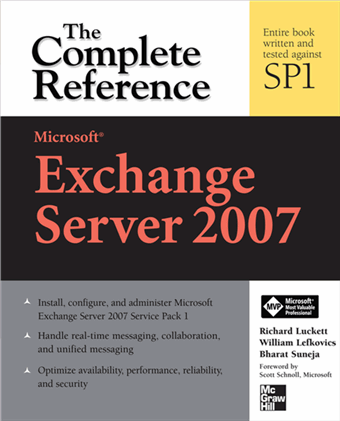For anti-spam agents like IP Block List providers (aka DNSBLs/RBLs), and Sender ID, it is important to know about which non-Exchange SMTP servers receive inbound internet mail. This allows it to ignore the SMTP servers that belong to your organization when parsing headers (in topologies where the Edge server - or the Hub Transport server if you don't have an Edge server - sit behind other SMTP relay hosts).
In Exchange Server 2003, this can be done using Exchange System Manager by going to Global Settings | Message Delivery | Properties | General tab | Perimeter IP List and Internal IP Range Configuration | Add.
In Exchange Server 2007, this is done using the Set-TransportConfig commandlet:
Related Posts:
- Exchange Server 2007: Making SenderID work with non-Exchange smtp hosts
In Exchange Server 2003, this can be done using Exchange System Manager by going to Global Settings | Message Delivery | Properties | General tab | Perimeter IP List and Internal IP Range Configuration | Add.
In Exchange Server 2007, this is done using the Set-TransportConfig commandlet:
Set-TransportConfig -InternalSMTPServers x.x.x.x,y.y.y.y,z.z.z.z
Related Posts:
- Exchange Server 2007: Making SenderID work with non-Exchange smtp hosts

 Exchangepedia Blog is read by visitors from all 50 US States and 150 countries world-wide
Exchangepedia Blog is read by visitors from all 50 US States and 150 countries world-wide



0 Comments:
Post a Comment
Links to this post:
Create a Link
<< Home